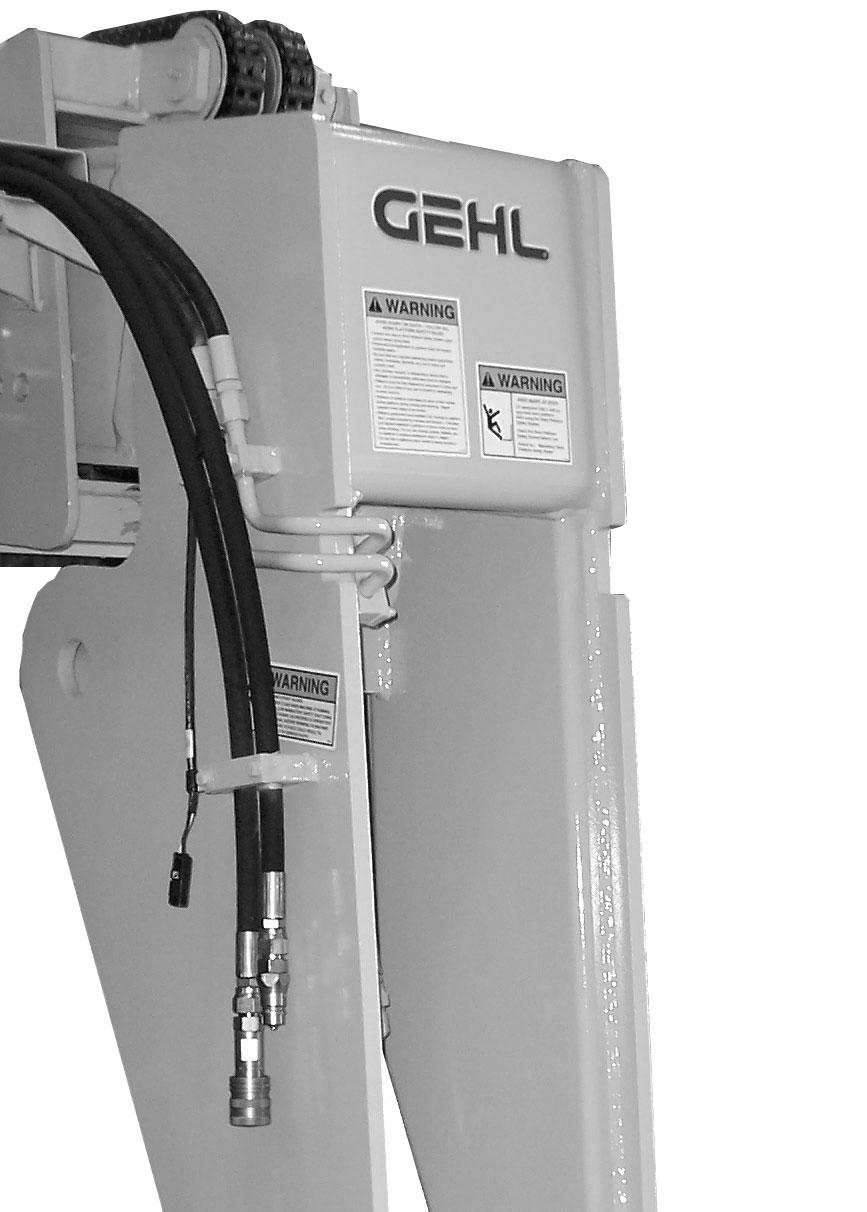Load Elevation and Placement
WARNING
For ground level load placement, be sure the area under the load and around the machine is clear of equipment and personnel. Lower the load to the ground, tilt the forks to the horizontal position, and then carefully back away to disengage the forks from the load.
NEVER exceed the rated operating capacity of the Telescopic Handler as shown on the load zone charts.
LIFTING ATTACHMENT TOOL APPLICATIONS
For elevated or overhead placement, bring the machine as close as possible to the landing point, and then:
Picking Up the Load
1. Level the machine BEFORE raising the load. Use extreme caution for high placement. Be sure personnel are clear of the area where the load or the machine could tip or fall.
Inspect the load. If it appears unstable, DO NOT attempt to move it. DO NOT attempt lifting doubletiered loads, or straddling side-by-side pallets with one on each fork. NEVER add extra unauthorized counterweights to this machine. Consider the additional weight of any attachment tool as part of the picking load capacity of the machine.
2. Set the parking brake, hold the service brake pedal in fully applied position and slowly raise the load, maintaining a slight rearward tilt to cradle the load. 3. As the load approaches the desired height, feather the boom control at minimum speed until the load is slightly higher than the landing point.
WARNING
4. Continue the feathering technique and lower the load into place.
Operating conditions can reduce the machine’s safe operating capacity. Exceeding the capacity when raising or extending the boom will cause the machine to tip forward.
5. Free the forks from the load by alternately retracting and raising the boom. If this process is not possible, very slowly and carefully reverse the telescopic handler to free the forks from the load.
Approach the load squarely and slowly with the machine straight and level. Adjust the space between forks, if necessary. Engage the load equally on both forks until the load touches the carriage backrest. Tilt the forks back to position the load for travel.
6. Lower the forks to travel height.
Installation of a Personnel Work Platform (PWP)
WARNING
Carrying the Load If the load obstructs your view, get someone to direct you. Maintain ground speeds consistent with ground conditions and that permit stopping in a safe manner.
The machine must not be used to lift or carry personnel, or be fitted with any form of personnel work platform unless fitted with the optional PWP System.
WARNING
If fitted with the PWP System, the Mandatory Work Platform Safety Rules (p. 12) must be adhered to at all times while elevating personnel.
NEVER travel with the boom above the carry position (attachment tool should be at minimum ground clearance). Boom should be fully retracted.
1. Center the forks on the carriage, spaced apart to match the distance required to engage the PWP.
Use lower gear when traveling down an incline. NEVER coast with the transmission in neutral. Travel up and down grades slowly.
2. After the forks are fully engaged in the PWP, secure the PWP to the forks. This can be accomplished by means of a retaining pin behind the heel of the forks as shown on the next page.
DO NOT operate the machine on a slope or grade that exceeds 22% or 12o. PRINTED IN U.S.A.
37
913218/CP0307







